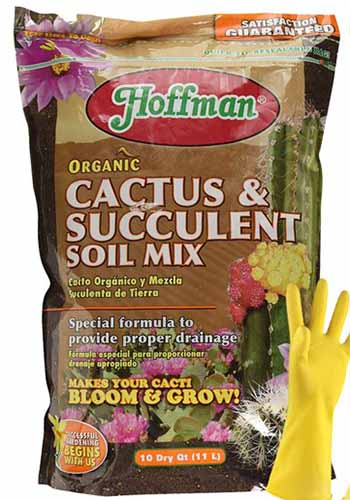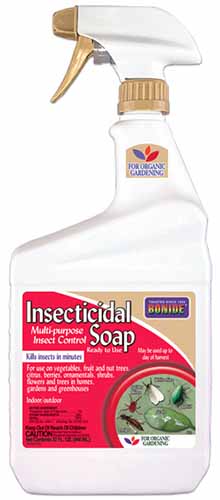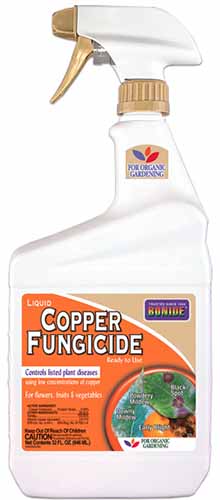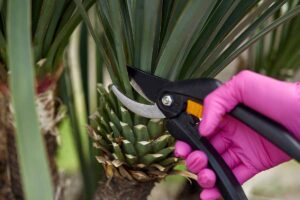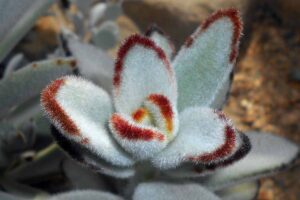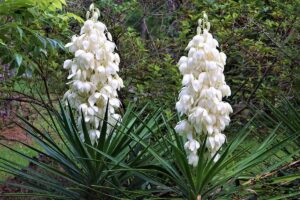Gonialoe variegata
I’ll bet I can guess why you’re interested in growing variegated tiger aloe.
Is it because of its distinctive form, with an intricate pattern of stripes, and pretty, colorful blooms to effortlessly turn heads?
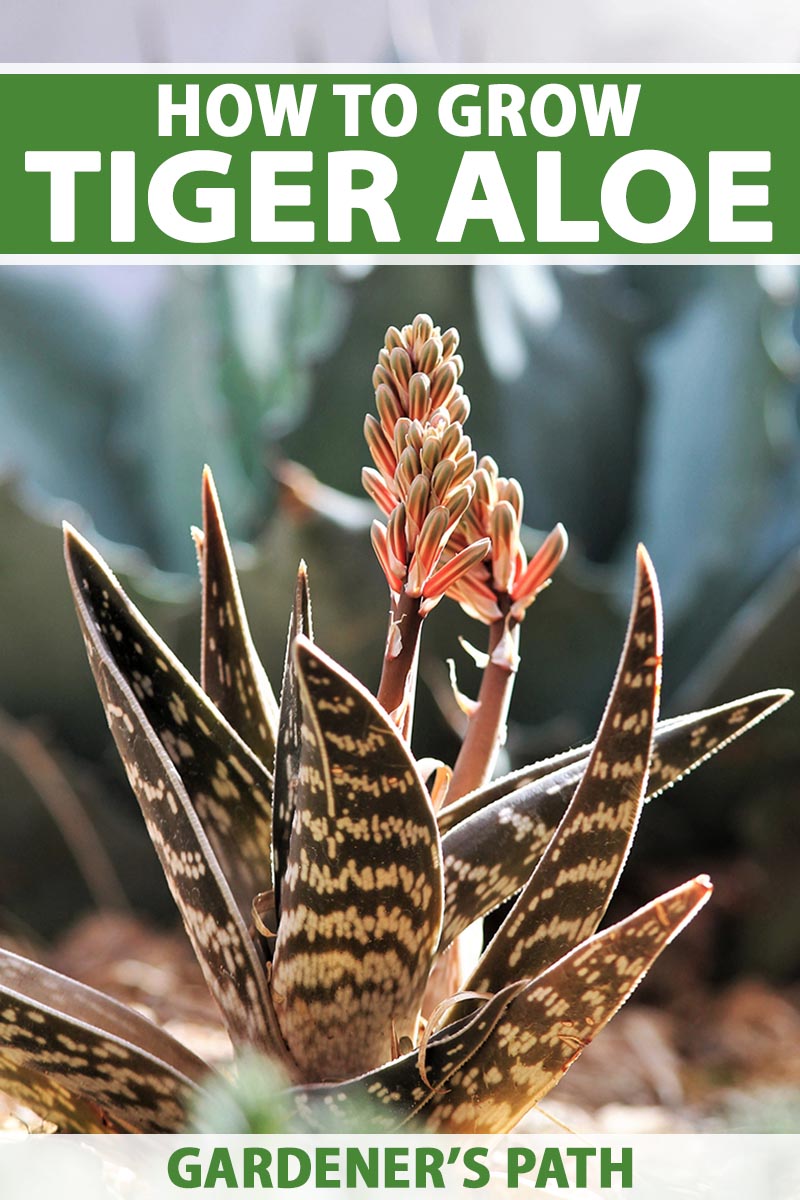
We link to vendors to help you find relevant products. If you buy from one of our links, we may earn a commission.
Or, maybe it’s because you enjoy the look of aloe but need something similar that also tolerates lower light and temperatures down to about 40°F.
Whatever your reason, this little succulent, also known as “partridge breast,” packs the ability to make a big impression into a little package.
Caretaking for this species is very similar to what’s required for other succulents, but with a few exceptions – and we’ll go over all the key details up ahead.
Here’s everything we’ll cover:
What You’ll Learn
What Is Variegated Tiger Aloe?
As I mentioned, the South African Gonialoe variegata (previously Aloe variegata) aka tiger or partridge breast aloe, is a member of a tiny genus known as Gonialoe.
This genus contains three similar species – G. dinteri, G. sladeniana, and G. variegata, all bearing an obvious resemblance.
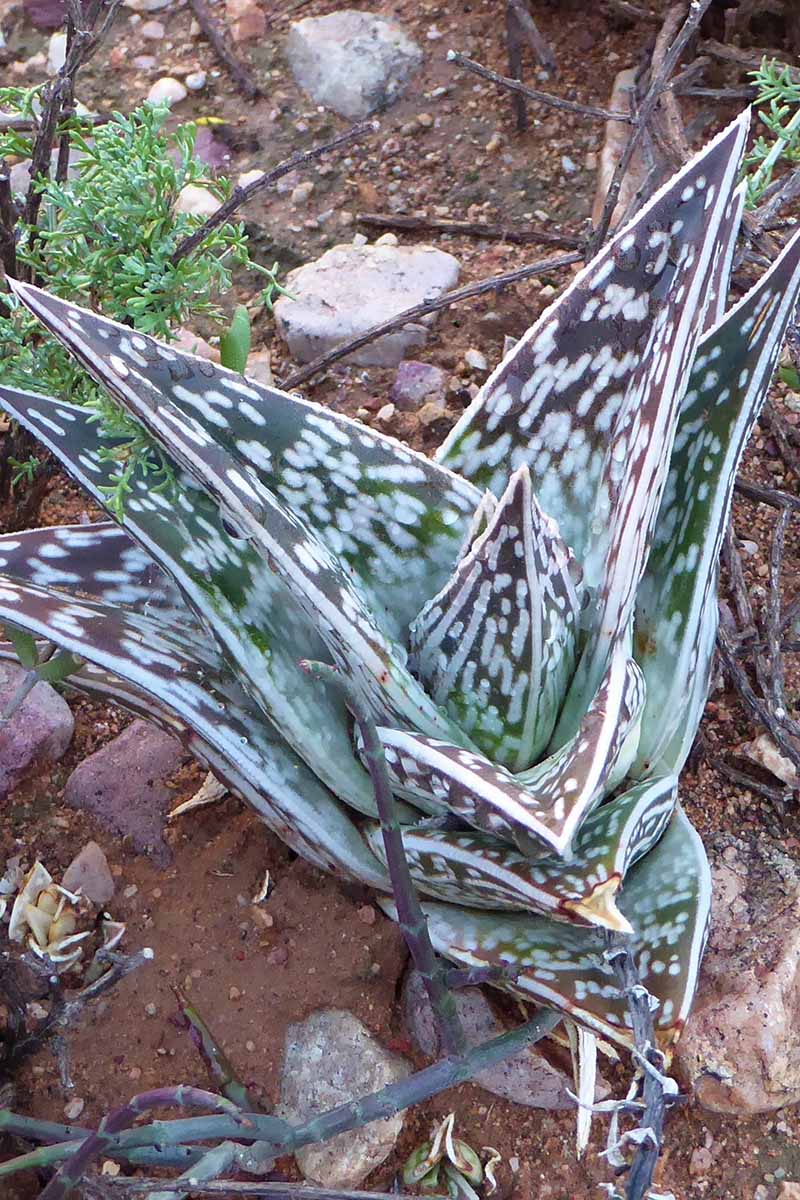
For many years, these plants were included in the larger Aloe genus along with several other species that have since been reclassified, such as Kumara plicatilis and Aloidendron barberae.
As it turns out, species in the Gonialoe genus are more closely related to plants in the Astroloba genus than they are to Aloe. Astroloba is a genus of succulents also native to South Africa.
If you compare the two, you can see the resemblance, as both have thick leaves that overlap to form a spiral column over time.
Note that variegated tiger aloe is not the same plant as tiger tooth aloe, or A. juvenna, which typically displays a brighter green leaf color and large, flexible spines throughout. This species also tends to grow in clumps of offshoots and can reach up to 24 inches in height.
Members of the Gonialoe genus exhibit distinctive striped or speckled foliage, often with margins of gray or white.
On the underside of the leaves, G. variegata features a thick ridge that is also gray or white against a background of tiger-like deep green and white stripes.
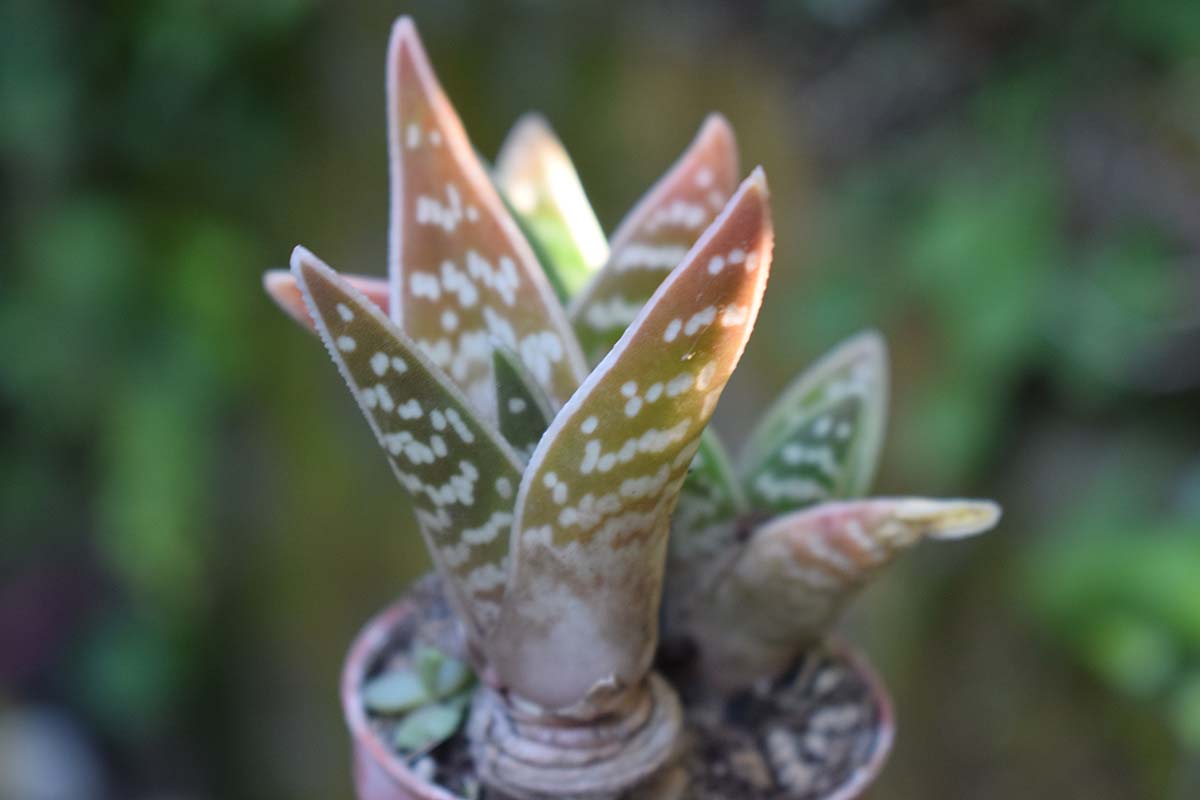
These stripes also resemble those seen on a partridge’s breast, hence its other common name. If you’ve never seen one, these small, ground-dwelling birds have a lovely pattern on their neck and the upper part of their breast.
In ideal growing conditions, the base tone of the foliage is a deep, emerald green, but in times of stress, it may change to a copper or brown tone.
The V-shaped leaves nest one inside the other, and at the center of the rosette, racemes with green to pink stems rise to 24 inches in height. Blooms of pink, coral, or orange bell-shaped blooms open at the tip of the stem.
Racemes typically form from mid- to late summer, blossoming into the fall season when grown outdoors. Indoors, however, it’s more common for blooms to appear in the winter, or houseplants may not bloom at all.
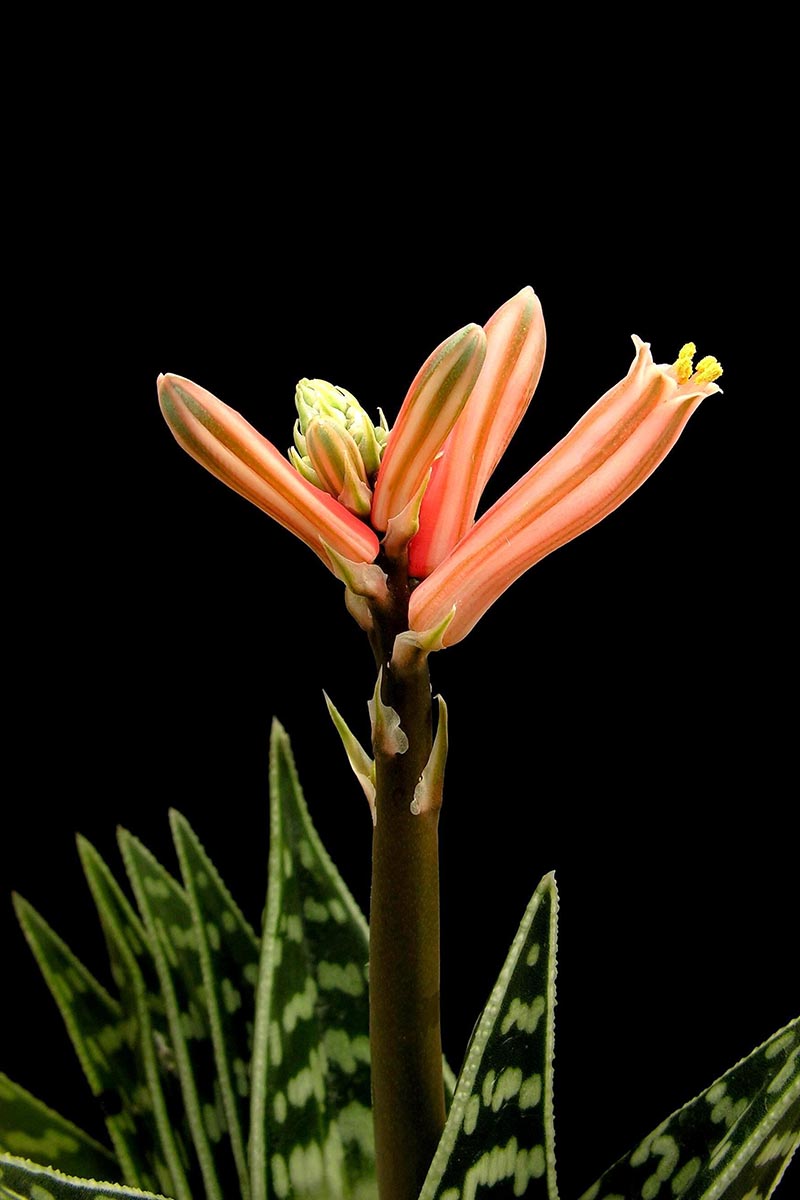
Leaf margins typically have fine teeth which don’t jab unsuspecting gardeners as deeply as some of the other members of the Asphodelaceae family of succulents.
If you have little ones or pets around who might be curious to explore, the finer teeth of this species might be more welcome in your home. These plants are also nontoxic if accidentally ingested.
This striking specimen reaches a modest height at maturity, ranging from 12 to 24 inches.
However, it can take five to 10 years to reach mature size as this species also grows very slowly, especially if grown from seed, making it a perfect addition to a smaller space.
Let’s take a quick stroll through the history of the tiger aloe before we move on to propagation and caretaking.
Cultivation and History
In 1685, an expedition to the Northern Cape region of South Africa was led by Simon van der Stel, the Dutch commander who later colonized the region at the Cape of Good Hope. During this expedition, a number of botanical specimens of note were recorded, including G. variegata.
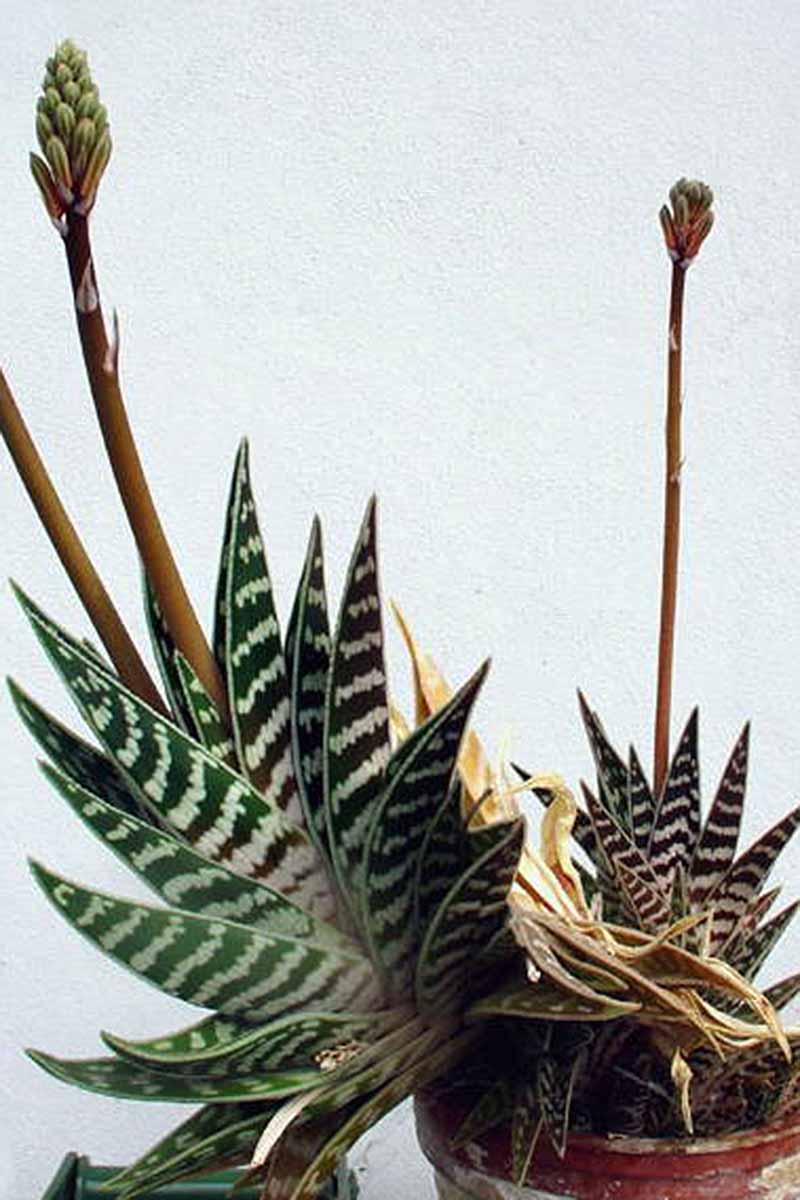
Although tiger aloe was already well-known among the indigenous peoples of the region, it was at this time that specimens were taken for cultivation, beginning in the garden of the Dutch East India Trading Company in Cape Town.
Over subsequent decades, specimens were introduced throughout Europe, ultimately becoming one of the most popular choices for indoor growing among gardeners due to its high tolerance for neglect.
In South Africa, this species is often called bontalwyn or kanniedood, the latter of which translates to “cannot die” in Afrikaans as it can survive long periods of drought. It is also placed on graves as a symbol of eternal life.
Unlike A. barbadensis, or aloe vera, tiger aloe has no known medicinal uses. Instead, it has gained popularity purely due to its stunning appearance and easy caretaking.
Another benefit of the species is its easy propagation, which can be done using seeds or leaf cuttings. We’ll cover this in more detail below.
Pollinated blooms form seed pods that typically contain three seeds – it’s important to collect them and prepare to plant them quickly after they mature.
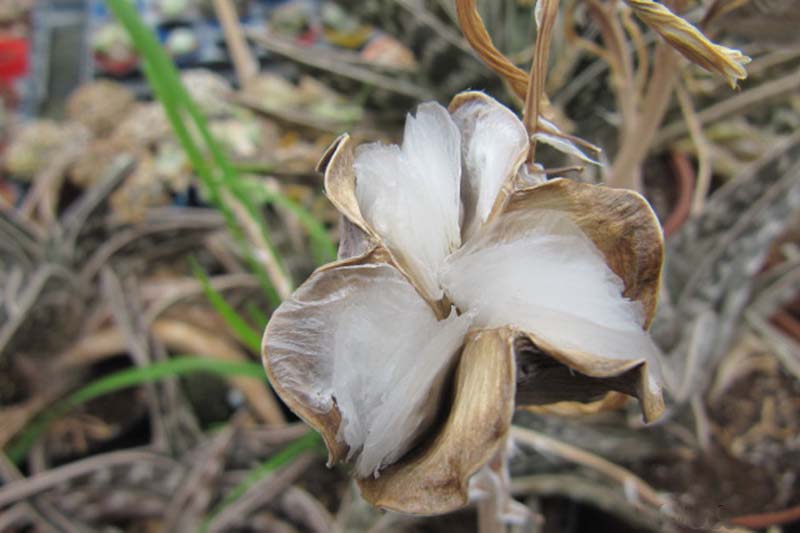
However, seed-grown specimens take far longer to mature than those grown from rooted leaf cuttings. We’ll cover both methods next, and you can decide which you’d prefer to use.
Propagation
Even though starting from seed is a less-preferred method of propagation because of the sheer length of time it takes for seedlings to mature, this is an option if you happen to collect some fresh from a seed pod. But, it’s a process that takes patience!
Older seeds or those that have been exposed to cold temperatures may not be viable, so it’s important to collect and sow them as soon as possible.
Shorten the wait by transplanting offshoots, sometimes called pups, or root individual leaves for faster results.
From Seed
Fill a flat or individual four-inch pots with cactus potting mix, such as Hoffman Cactus and Succulent Soil Mix, available from Walmart in 10-quart bags.
Hoffman Cactus and Succulent Soil Mix
Alternatively, mix together one part loamy soil and two parts coarse sand. Fill a flat or pots with your chosen growing medium and water them well, allowing any excess water to drain off. We have tips on mixing a DIY succulent soil mix here.
Damping off is a common concern for seedlings of this species, so seeds can be sprayed or coated with a fungicide prior to planting. Afterward, press the seeds into the surface of the soil and lightly cover them.
Place them in a warm spot where the average temperature is between 70 and 85°F or on a heat mat.
When sprouts appear, which usually takes three to four weeks, place the flat or pots in a location where they’ll receive six to eight hours of bright, indirect sunlight and mist the soil with water every few days to prevent it from completely drying out.
When they reach about two inches in height, they can be transplanted and relocated to a permanent location.
From Leaf Cuttings or Offshoots
Succulent leaves are easy to root and will provide much faster results than propagating seeds.
All it takes are a few healthy leaves, a flat or pots full of cactus potting mix, some water, sunlight, and a little time.
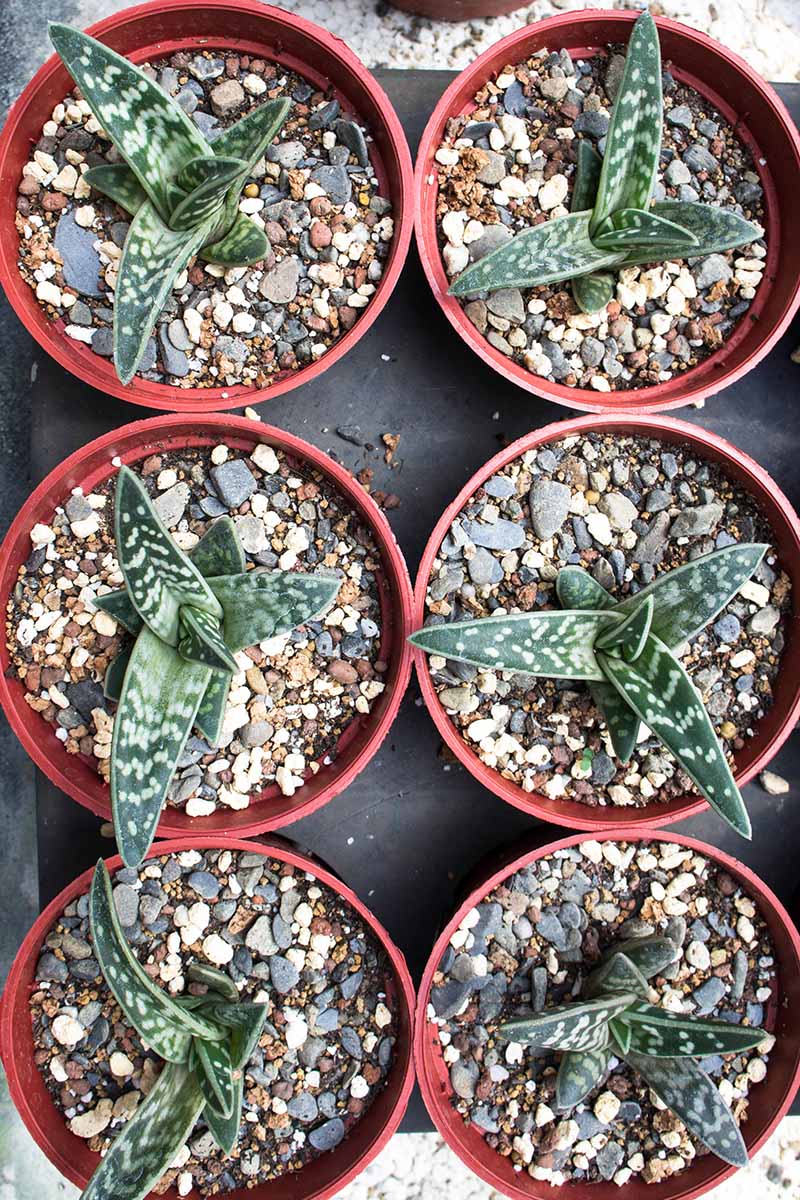
If your specimen has produced offshoots, those are also a great option for propagating as they come complete with their own root systems. Once they’re separated from the parent plant, they can simply be relocated to an appropriate site of their own.
Learn exactly how succulent propagation is achieved in our detailed guide.
How to Grow
Unlike many succulents that require full sun, tiger aloe doesn’t mind slightly lower light, whether indoors or outdoors. Of course, there’s a difference between tolerance and preference, so the more light, the better.
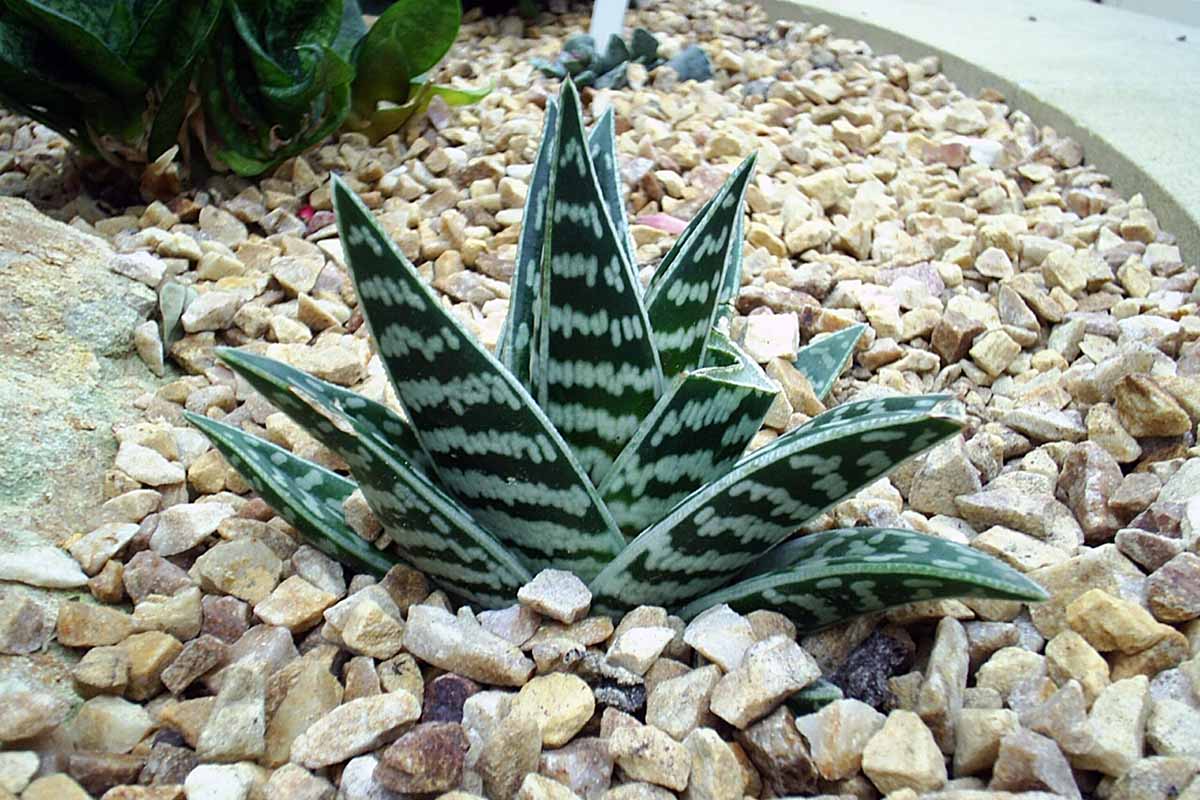
Outdoor temperatures in USDA Hardiness Zones 9 to 11 are most appropriate for in-ground growing. Outside of these zones, it’s best to bring G. variegata inside as a houseplant. We’ll cover container growing in just a moment.
If outdoor temperatures drop below about 40°F, the plant should be covered to protect it from cold damage. Potted plants can also be placed outside throughout periods of appropriate conditions and moved to safety as temperatures drop.
Sandy loam or sandy, rocky beds where water runs off well are ideal outdoor locations. If your region receives a lot of rainfall, you can install this species along a slope where most of the excess water drains away.
It’s best to water as needed based on soil moisture rather than scheduling it on a regular basis to prevent overwatering, which can lead to rot.
Wait until the soil feels dry two inches deep to water again and soak it well.
Additional details on growing and caring for aloes can be found in our guide, and although this species is now considered a member of a different genus, the same growing information still holds true.
Container Growing
Your plant won’t need repotting for a long time, so choose a container that you really like! Unglazed ceramic is best to allow for transpiration, and good drainage is a must.
One such as this neat little Mossy Sphere Planter, available from Terrain, makes a good choice as the rounded shape and soft color contrasts against the bright, angular specimen.
The interior of this container is about six inches deep, which is perfect for almost any size tiger aloe.
Fill the pot with cactus mix, water it and let it drain, and make a hole the same size as the root system. Place your specimen in the hole so the base of the plant is sitting at soil level, and backfill around the roots.
Place it in a spot where it’ll receive about six to eight hours of sunlight per day and water it only when the soil feels dry two inches under the surface.
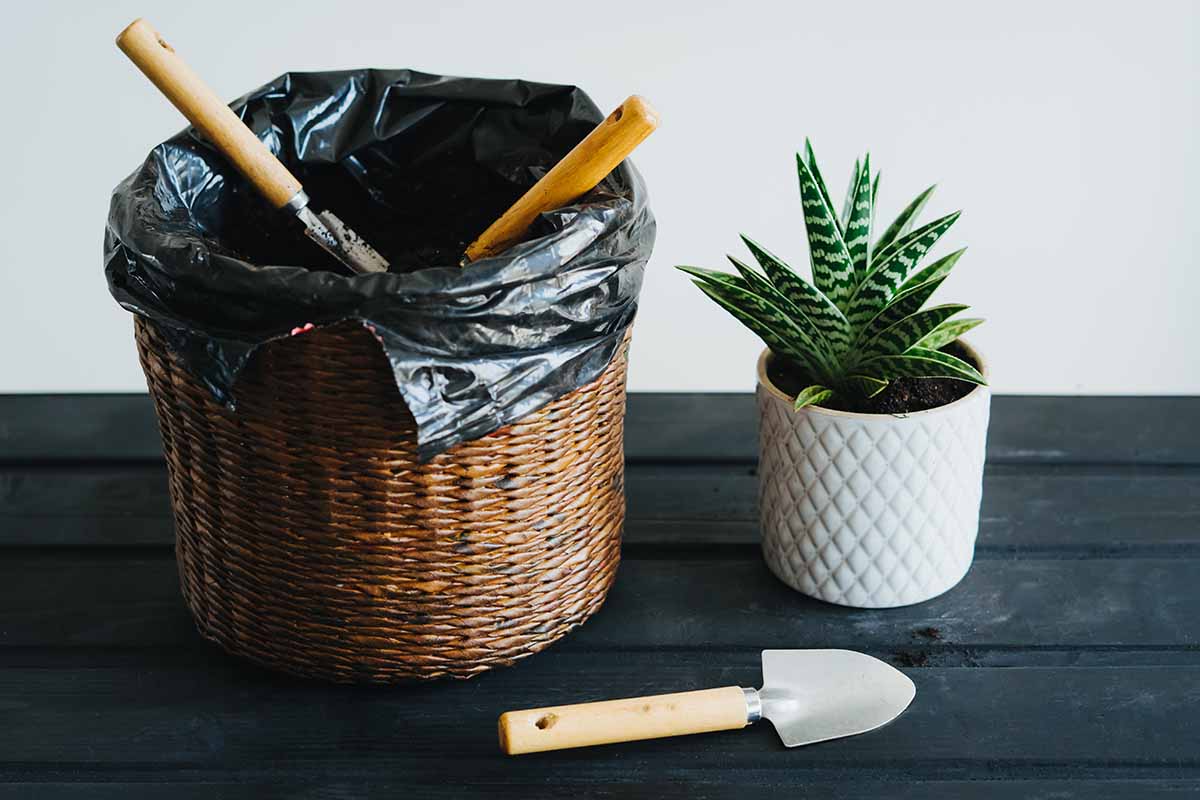
A container-grown specimen can be moved outdoors in spring and summer in most regions when temperatures are consistently above about 60°F, and indoors again when the chill returns.
Fertilizing
Fertilize twice yearly with a liquid product, or use a slow-release granular product, such as The Grow Co. Succulent and Cactus Food, available in a five-ounce package from Amazon.

Succulent and Cactus Plant Food
It has an 11-10-11 NPK ratio that won’t cause burning or overfeed your tiger aloe, which is especially important if yours is growing in a container, since the smaller space can easily become overloaded.
With normal watering, the slow-release granules can last anywhere from six to nine months after application, meaning you’ll be fertilizing less often and with less risk of overdoing it.
Spring and summer are the best times to fertilize as active growth, however slow, is taking place.
Poke some holes in the soil before you water, but mind the root system, and follow the instructions on the package to know how much to spread on top of the substrate. Water deeply afterward and away you go!
Growing Tips
- Tiger aloe can be grown outdoors in sandy loam or a sandy substrate, such as in a xeriscape or rock garden.
- Container-grown specimens can be kept exclusively indoors or moved outdoors when temperatures are consistently above about 60°F.
- Ceramic pots work best for this and other succulents, but be sure to monitor moisture levels in the soil.
Maintenance
Succulents are some of the easiest specimens to maintain. They need practically nothing from us besides sunlight, warmth, and an occasional drink of water.
The same can be said for G. variegata specifically. Simply keep an eye out for cues that something might be amiss, such as discoloration, die off, wilting, or a sudden period of growth resulting in a leggy specimen.
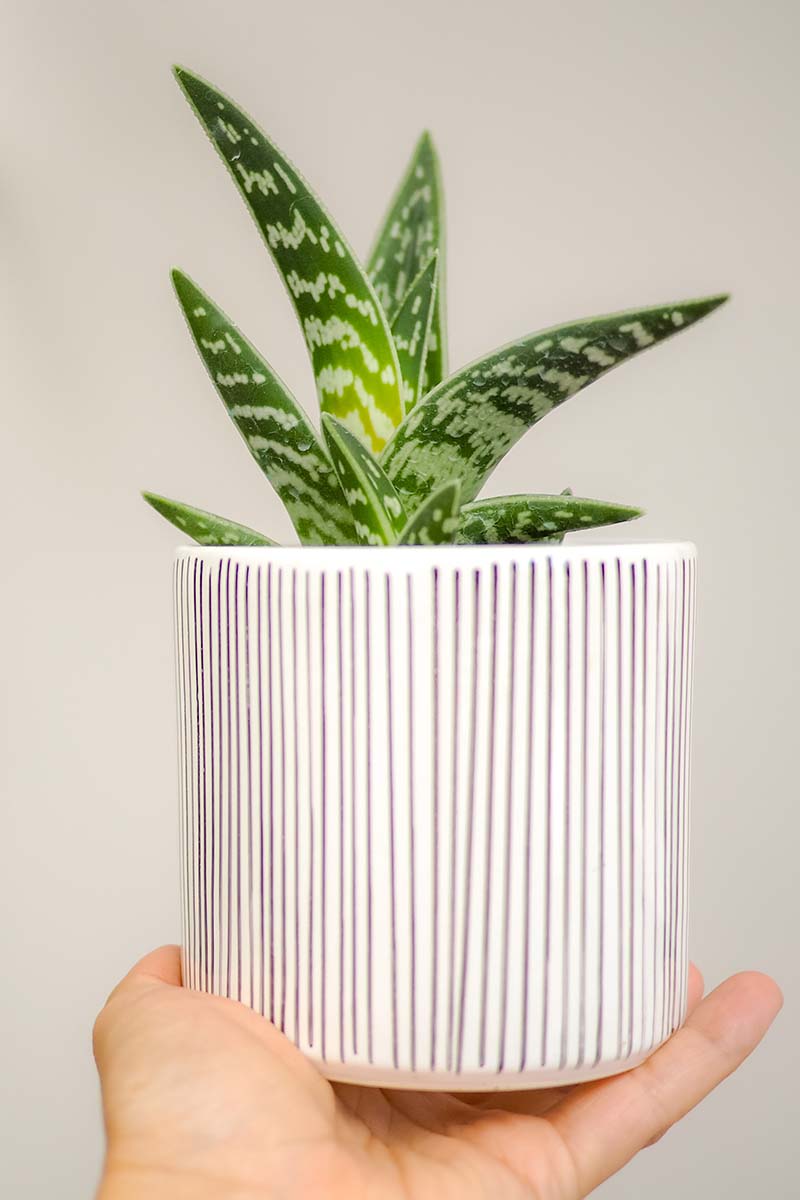
The process of becoming leggy is known as etiolation. In succulents, as in other plants, this is typically a sign of inadequate light, and unfortunately, there’s no way to return it back to its normal shape.
Rather than trashing the specimen, however, simply use it to propagate new plants by plucking the healthy leaves off, rooting them, and starting fresh.
Color changes and die-off are generally signs of stress, which may be caused by environmental conditions as well as disease or infestation.
Check carefully to make sure there are no unwelcome hitchhikers taking advantage of the free camping or symptoms of illness.
Wilting is often a sign of overwatering or root rot. We’ll talk a bit more about that and other common problems up ahead.
Dead or dying leaves can be snipped off, and spent racemes can also, if you don’t plan to collect seed from pollinated plants after the flowers are finished.
Managing Pests and Disease
There are very few maladies to be aware of with this species – and the ones that might make an appearance are rarely deadly.
Here’s what to watch out for:
Herbivores
Most herbivores won’t bother to snack on aloe if there are other food sources available.
Hares
In the plains and high desert of the western United States, hares sometimes make use of succulents as a source of water.
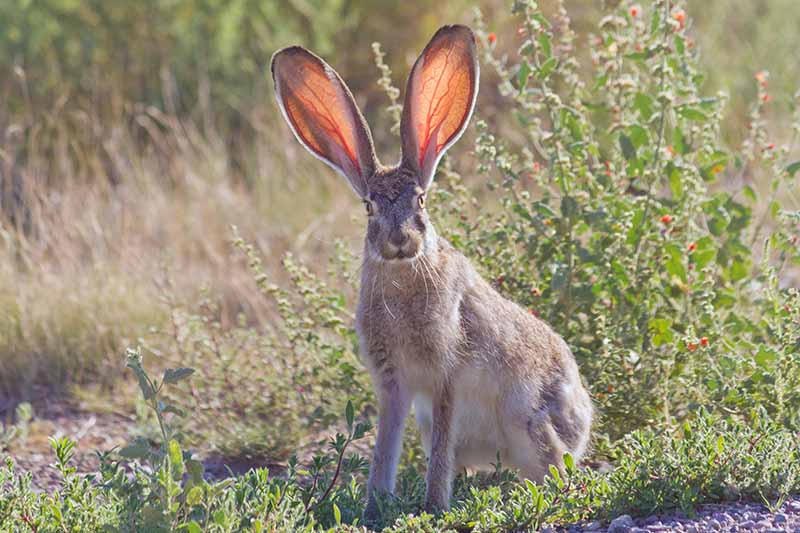
They can sometimes chew vegetation down to a nub, so if they’re common in your region, it might be best to keep your plants out of reach in containers on the deck or porch.
Or, if you don’t mind lending a hand to hungry and thirsty local wildlife, let them have their share.
Porcupines
It might seem a little strange to some people to have a porcupine dining on the front lawn, but to others, it’s par for the course. These large rodents can also climb trees, but that’s information for another occasion…

In regions with low rainfall for part of the year, succulents are a welcome treat when water is scarce, so they might visit for a bite.
And who’s going to tell such a formidable fellow to vamoose? Not me! I’d most likely be taking pictures from a distance – but if you’d rather not have to deal with them, as with hares, place plants in a protected location out of reach.
Tortoises
Just as with our other uninvited dinner guests, tortoises often munch on succulents as a source of water.
In my experience, I’d rather let them eat and contribute what I can to keeping them around, since most are unfortunately endangered in regions throughout the United States.
If they’re taking more than their share, a low barrier like a rocky border or raised bed will usually keep them out since they can’t easily climb. It only needs to be about 18 to 24 inches in height to deter them from entering.
Insects and Arachnids
Even though insect pests and arachnids might appear from time to time, they’re unlikely to cause significant damage.
Aphids, fungus gnats, scale, spider mites, weevils, and whiteflies have all been known to take an interest in succulents.
In most cases, an application of neem oil or insecticidal soap to the foliage will do the trick – except in the case of fungus gnats, where a soil drench of neem oil will be required to kill the larvae.
You can find Bonide Neem Oil in quart, pint, or gallon bottles available at Arbico Organics.
Bonide Insecticidal Soap is also available from Arbico Organics in 12- and 32-ounce bottles.
Disease
There are also very few diseases of concern, but one – root rot – can be deadly.
Others, such as bacterial soft rot and basal stem rot, are covered in greater detail in our guide to growing aloe outdoors.
Root Rot
When the lower leaves of a tiger aloe start to curl, become mushy and weak, or die off, it’s time to check for root rot. Discoloration can also be a sign that something is wrong below the soil surface.
When these signs appear, the only way to check up on root health is to unearth the root system. Do so gently since it’s likely already damaged.
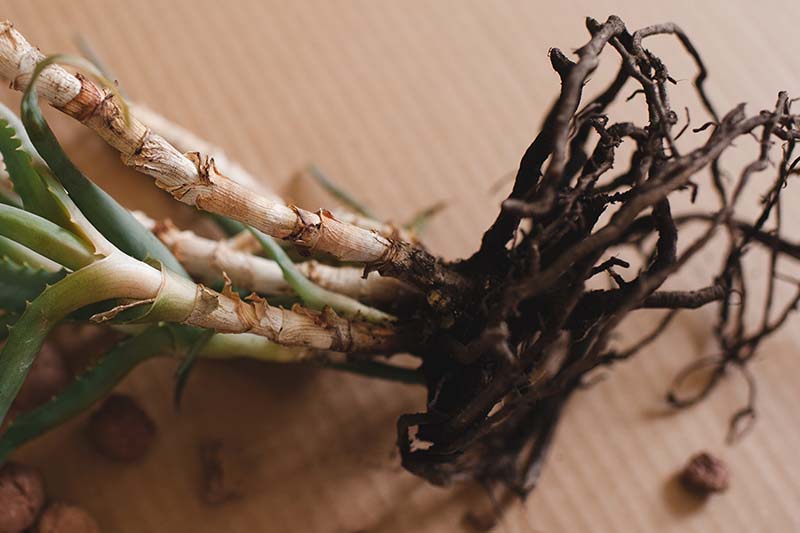
Root rot looks like decaying black or brown roots, sometimes with a slimy texture or foul smell. To treat this condition, rinse the sand and soil away and trim off any affected parts. Discard them in the trash.
Take steps to improve soil drainage for in-ground plants, and replace the potting mix for container-grown specimens. Be sure to sanitize the pot using hot water and soap, or a 30-minute soak in diluted bleach, to prevent reinfection.
Outdoor sites can be treated with a spray of copper fungicide, such as Bonide Liquid Copper Fungicide in 16-or 32-ounce hose-end bottles or concentrate, from Arbico Organics.
Allow the roots to dry out and replant, but be sure to reduce watering to times when the substrate feels dry two inches below the surface.
Best Uses
We’ve already covered container growing and installing these striking little darlings in your xeriscape or rock garden, but there are other ways to add them to the home or landscape as well.
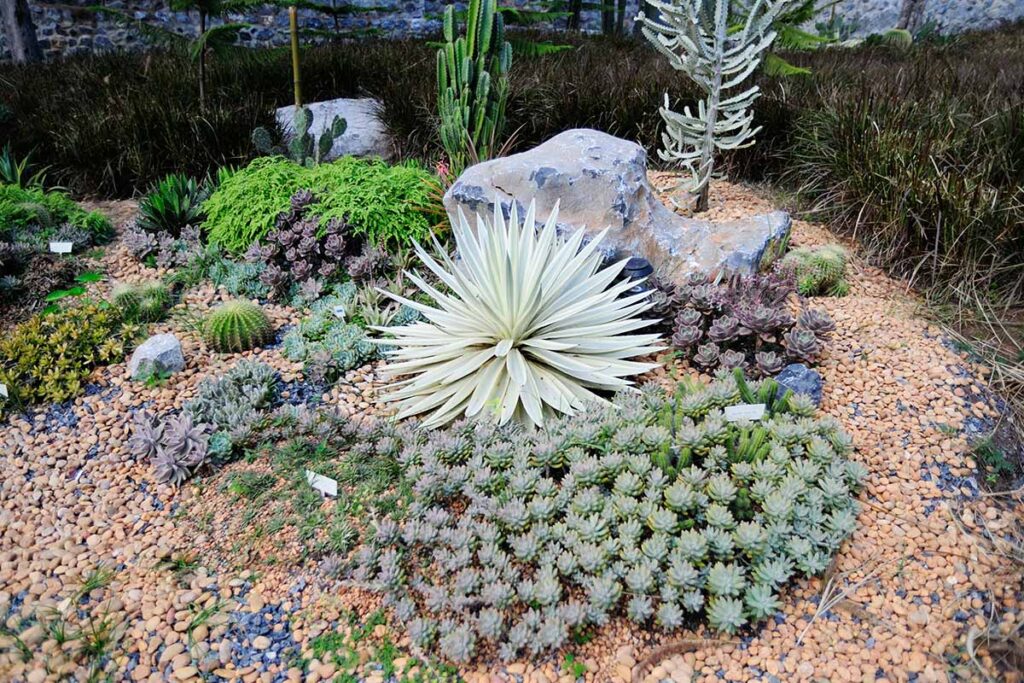
A large, densely filled, natural planter, such as one made of driftwood or stone, makes a gorgeous centerpiece on a large table.
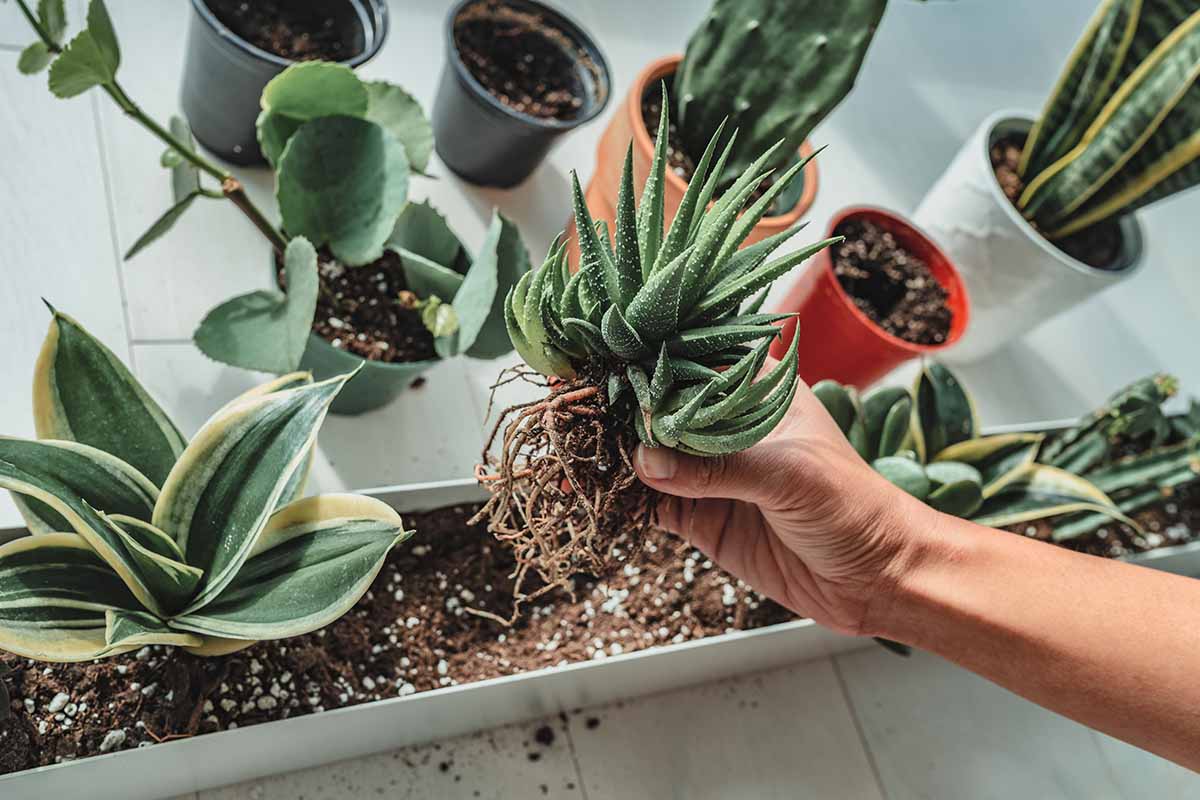
For a modern look, glossy ceramic or concrete planters make a bold statement when paired with the stripes and colors of the tiger aloe. Pair it with other less brightly colored succulents like haworthia or hens and chicks for texture and color.
Just be mindful of drainage in any decorative pot or planter you choose.
Outdoors, a contemplative zen garden is a beautiful place for a placid installation. Add these plants to a sandy bed or create a mass installation for an added wow factor among the rocks and raked sand.
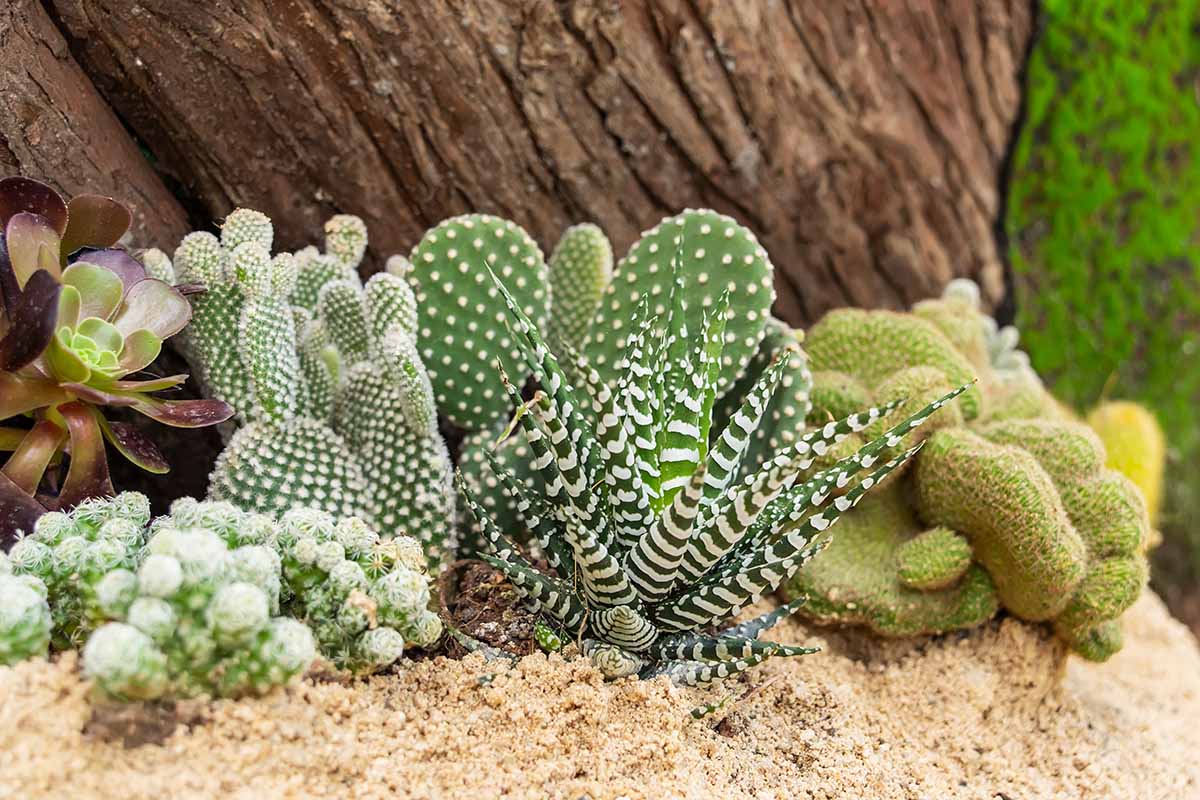
They also make wonderful gifts! Divide pups to grow in their own pots and give them to the plant lovers in your life!
Quick Reference Growing Guide
| Plant Type: | Evergreen succulent | Flower / Foliage Color: | Pink, coral, orange/green and white variegated |
| Native to: | Southern Africa | Maintenance | Low |
| Hardiness (USDA Zone): | 9-11 | Tolerance: | Sand, drought, low light |
| Bloom Time: | Winter in tropical zones, spring and summer in temperate zones | Soil Type: | Cactus and succulent potting soil, sandy loam |
| Time to Maturity: | 5-10 years | Soil pH: | 5.5-7.0 |
| Exposure: | Full sun to partial shade | Soil Drainage: | Well-draining |
| Spacing: | 12 inches | Companion Planting: | Other cacti and succulents, snake plants, palms |
| Planting Depth: | 1/8 inch (seeds), 3-4 inches (transplants) | Avoid Planting With: | Species with high water needs |
| Height: | 12-24 inches | Uses: | Beds, focal point, structural interest, mass installation, container growing, wildlife support, xeriscaping, zen garden |
| Spread: | 10-12 inches | Family: | Asphodelaceae |
| Water Needs: | Low | Subfamily: | Asphodeloideae |
| Growth Rate: | Slow | Genus: | Gonialoe |
| Common Pests and Diseases: | Aphids, fungus gnats, hares, porcupines, scale, spider mites, tortoises, weevils, white flies; bacterial soft rot, basal stem rot, root rot | Species: | Variegata |
Some Big Things Come in Small Packages
Succulent collectors are missing out if this species is absent from their collection!
It’s such a distinctive addition to the home or landscape, especially in areas where outdoor color is lacking through most or all of the year. Those stripes are sure to break up the monotony of dry, brown ground for miles around.
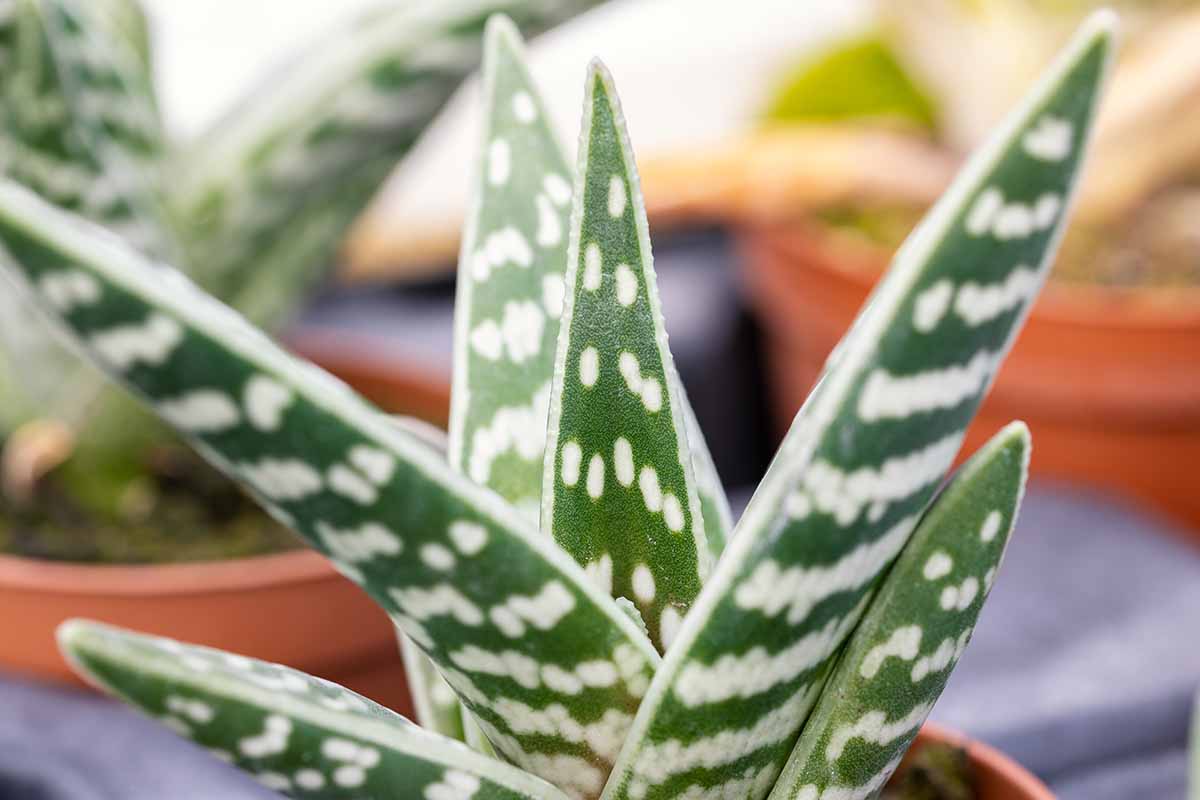
Where will tiger aloe reside in your home? Will it be indoors or out? We’d love to see what you do with it, and hear about your ideas in the comments below!
And, as always, we’ve got more for your perusal – these succulent and cacti guides might be right up your alley:
